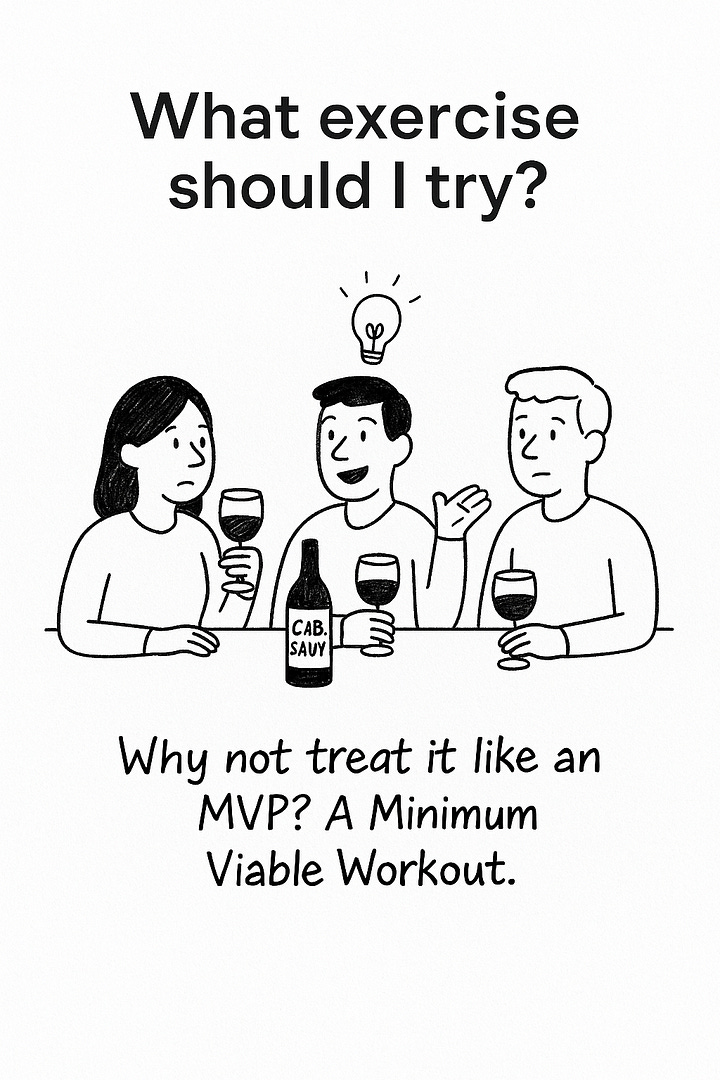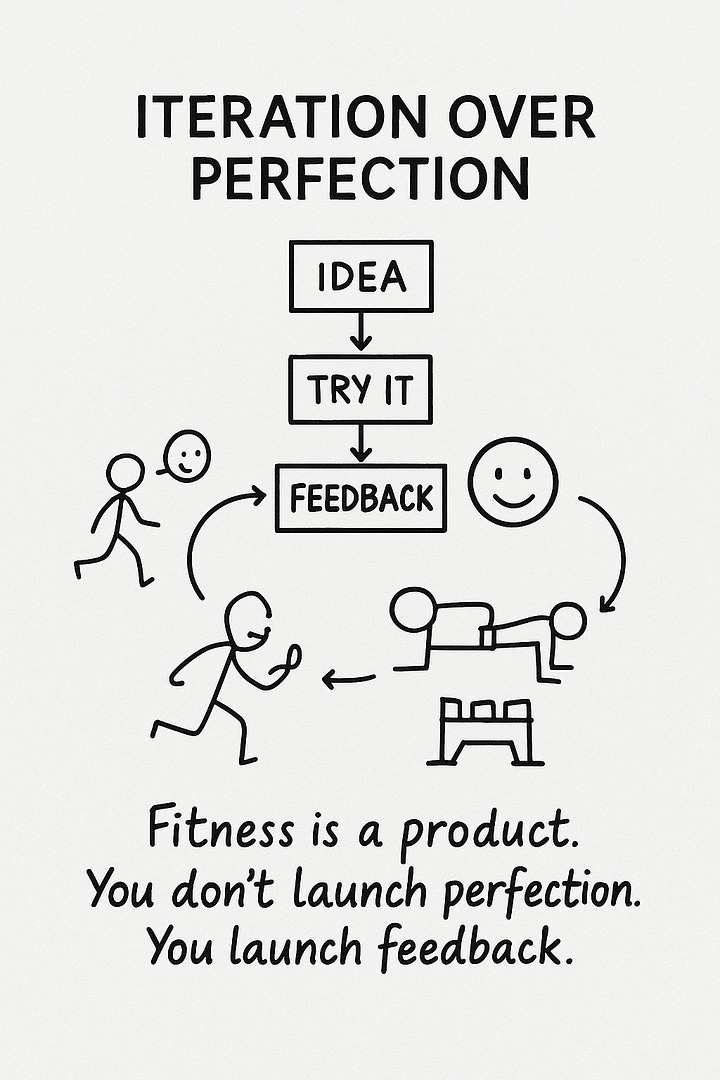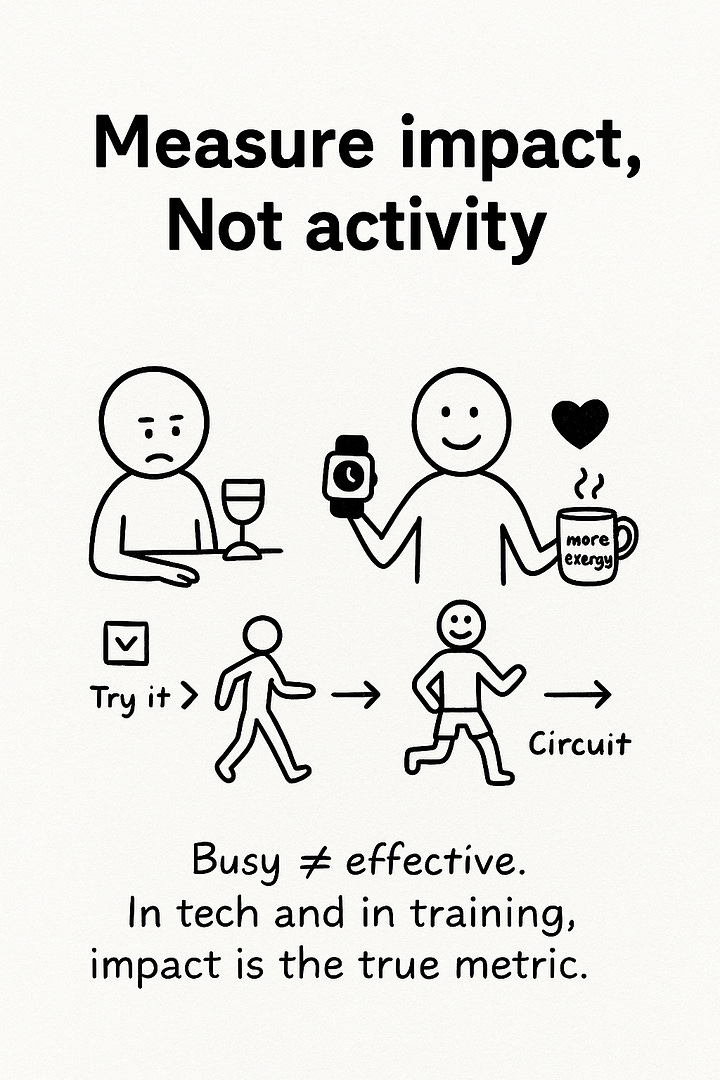The MVP Mindset: What Lean Product Thinking Shares With Fitness Training
Discover how the MVP mindset and lean product thinking can transform your fitness strategy—start with a Minimum Viable Workout and iterate your way to results.




Recently, I’ve been trying to convince some friends to live a more active life. Over wine-fueled debates (because what better time to challenge sedentary lifestyles than with a bold Cab Sauv), a familiar excuse surfaced: “I just don’t know what sport or exercise to try.” That’s when, perhaps too enthusiastically, I blurted out:
“Why not treat it like an MVP? A Minimum Viable Workout.”
In the world of tech and product management, the MVP mindset is sacred — launch fast, learn faster. But when it comes to fitness, we flip the script. We chase perfection from day one: 6-day strength training splits, 90-minute WODs, supplements with names that sound like Marvel villains (before even buying gym shoes).
This post draws the line between two seemingly different worlds: product development and fitness. Whether you're building an app or a body, the principles of lean product thinking —iteration, testing, and feedback, hold true. It’s time we applied that logic to our fitness training strategy, especially for anyone starting a gym routine for beginners or just trying to build a consistent fitness habit.
1. Iteration Over Perfection: Progress, Not Polish
In product development, perfection is the enemy of momentum. Startups don’t wait for a perfect build. They ship just enough to test the idea. The goal? Learn fast, fail cheap.
The same principle applies to fitness. Your first workout shouldn’t be a meticulously crafted 6-week strength training program or a gruelling CrossFit hero WOD. It could be as simple as a 20-minute walk. A bodyweight circuit. A boxing class with bad coordination but good vibes. It’s not about reps, it’s about reps of showing up.
This is where the growth mindset kicks in. Don’t aim to sculpt your body in 30 days. Aim to build the habit in 30 reps. Iterate. Evolve. Adapt.
“Fitness is a product. You don’t launch perfection. You launch feedback.”
In short: Ship your first workout like you’d ship an MVP—imperfect, but in motion.
2. Programmatic Testing and Cycles: Everything Is a Sprint
In product management, everything runs in cycles. Sprints, A/B tests, feature flags, feedback loops. You build, measure, learn, then do it again, smarter.
Fitness works the same way. Strength programs run in 8–12 week cycles. Hyrox athletes follow block training. Even yoga flows are tested and refined based on mobility goals and pain feedback.
If you’re stuck in fitness limbo, apply the product lens:
Form a hypothesis (e.g. weight training will improve my energy)
Commit for 4 weeks
Measure the results.
Then pivot or double down.
Pro tip (not a paid ad): Platforms like ClassPass let you experiment. Try strength this week, yoga next. Think of it as A/B testing your own body.
“Your body is the user. Your program is the roadmap. Test. Tweak. Repeat.”
The secret? Treat your workouts like product sprints—not life sentences.
3. Measure Impact, Not Just Activity
In the product world, we’ve learned the hard way: page views are vanity metrics. Engagement, retention, LTV, that’s the good stuff. That’s what moves the needle.
The gym equivalent? Stop counting workouts like they're push notifications. Five workouts a week mean zilch if you’re exhausted, bored, or injured. Instead, ask:
Are you sleeping better?
Is your anxiety down?
Do you want to show up again next week?
That’s retention. That’s a user (you) finding value.
Shift the mindset: from checking fitness boxes to tracking fitness ROI.
“Busy ≠ effective. In tech and in training, impact is the true metric.”
Because in both product and fitness, what matters isn’t how much you do. It’s what it does for you.
Final Thoughts
Whether you're shipping a product or sculpting your fitness, the game is the same: test, learn, repeat. The MVP mindset and lean product thinking aren’t just for startups; they’re a powerful lens for anyone trying to build a lasting fitness habit or start a gym routine for beginners.
You don’t need a personal trainer, a 12-week Insanity program, or a PhD in kinesiology to begin. What you do need is curiosity, consistency, and the guts to experiment. Treat your body like a product in beta: test what works, scrap what doesn’t, and keep building.
So the next time you're paralysed by choice: weights or yoga, spin or Pilates, don’t ask, “What’s the perfect plan?”
Ask: “What’s my Minimum Viable Workout?”
Then try it. Get it out the door. Sweat. Iterate. Grow.
Because in product development and fitness training strategy, momentum beats perfection (every damn time).
